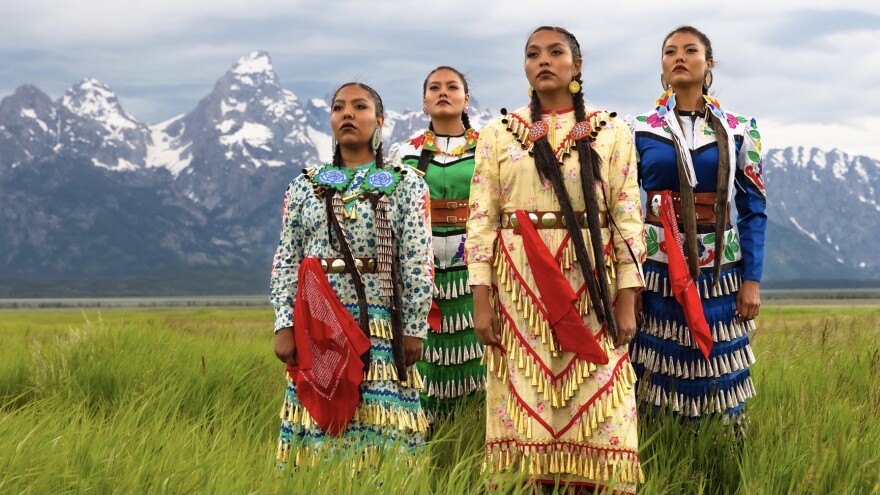A group from the Lower 48 plans to share an Indigenous artform and advocate for physical, spiritual and cultural healing in Alaska. The effort is called the Jingle Dress Project. And the group of Diné artists hopes a trip to Alaska is the first of many.
The artform of jingle dress dancing began in the Lower 48 about a hundred years ago and spread throughout Indigenous communities.
One of the dances for the Jingle Dress Project, Dion Tapahe, talks about the importance of the dance.
“It’s significant because when you do dance the jingle dress it sounds like rain and they represent prayers going up to the creator so it’s a dress of healing and so when you do the dance it’s a dance of prayer and healing.
This dancing is usually seen and heard at competitions during powwows and forms of creative expression. Cultural understanding says during the 1918 Spanish flu pandemic, an Ojibwe man first dreamt of the jingle dress as a way to heal his sick daughter.
In 2020, during the COVID-19 pandemic, many of the art shows that journalist and photographer Eugene Tapahe participated in began to cancel. The virus also started to impact the people around him.
He says a dream inspired him to begin the Jingle Dress Project.
In a statement on the Jingle Dress Project website, Tapahe talks about that dream:
“I was sitting in a grass field at Yellowstone National Park watching the bison graze on the horizon as the sun set. And then, in the distance, I heard the healing sound of jingles. One by one, beautiful jingle dress dancers appeared. It was as if they were dancing with the bison to the rhythm of a silent drum. It was beautiful and peaceful.”
Traditionally artists formed jingle cones from small metal lids. But one jingle doesn't make a sound on its own. That's why a jingle dress incorporates hundreds of them.
After he told his family about the dream, he recruited daughters Dion and Erin Tapahe, as well as Sunni and JoAnni Begay. And they’ve traveled thousands (25,000-plus) of miles to speak to communities about the project.
The goal of the project is to travel, to dance and give hope through art, dance and culture to help us heal.
The group plans their first trip to Alaska for August 4th through the 11th. They will visit Ketchikan and the surrounding area. Eugene Tapahe says they plan to talk to Elders, students and the community as a whole.
“We have a pretty tight schedule. We’ll be there for seven days. I think that’s the part that we really are excited about because COVID is a little better now, and we can have this time to be able to go into the communities to share our message and culture," he said. "And also we’re excited to be able to learn from them and to try and open up some connections to be able to help one another – we all have different issues we’re dealing with, but most of the time it’s the usually same issue we’re dealing with just different lands and areas, so we’re hoping to be a resource to help those out there also.”
The group says the logistics of traveling in Alaska limited this trip to the Ketchikan area. But Erin Tapahe says they want to return and visit more places.
“I think we were wanting to go to Sitka and a couple of other places, but in the planning portion we didn’t quite realize how big Alaska was so we can’t go to all the places that we hoped for in one trip.”
In 2021, Erin completed the Boston Marathon and performed a jingle dress dance for the runners and those impacted by COVID-19.
'And so being able to bring the jingle dress into everyday life, kind of that way has been important because it’s been important to me to keep myself in a positive way keeping myself health and having positive thoughts and trying to refrain from negativity in my life and that’s been a big part of regularly dancing."
During the group’s visit, they will also participate in the Blueberry Arts Festival and give a presentation at the Tongas Historical Museum.

